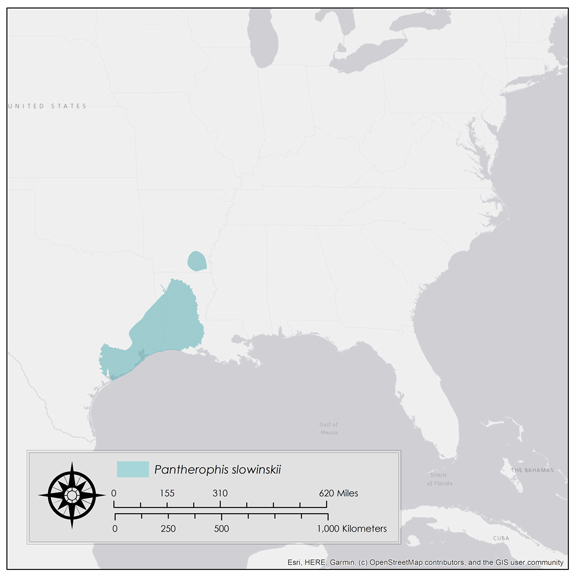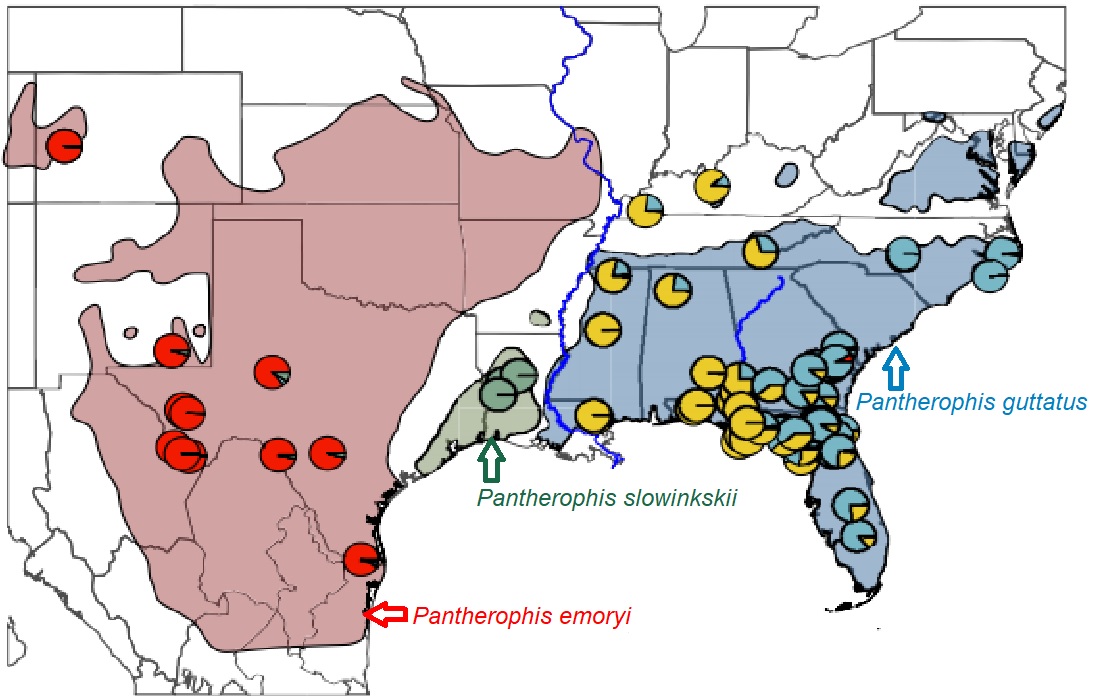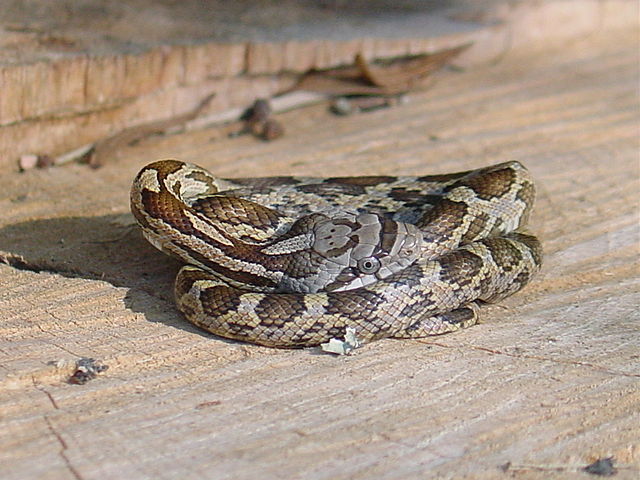Slowinki's Ratsnake Pantherophis slowinskii
Slowinski's Cornsnakes Pantherophis slowinskii are harmless ratsnakes native to Louisiana and Texas. Like other cornsnakes, they are generalists and eat a variety of prey. They do well in urban environments, and are particularly fond of rodents and birds in these habitats.
Slowinksi's Cornsnakes are currently recognized as distinct from cornsnakes P. guttatus, as well as Emory's Ratsnake P. emoryi.
Geographic Range Map:

Diagnostic information and similar species:
Cornsnakes have weakly keeled scales and are closely related to other ratsnakes. They are sometimes confused with kingsnakes like Lampropeltis calligaster, L. rhombomaculata and L. occipitolineata, but all Lampropeltis kingsnakes have smooth scales rather than keeled. For a complete diagnosis, see the key.
This phylogeny shows their relationship with the other snakes in the tribe Lampropeltini:
Legacy species accounts and other common names:
Species names are hypotheses that are tested and revised. The "cornsnake" species complex, formerly Elaphe guttata, underwent revision in 2001-2002 from multiple authors and received two main changes. First, using Elaphe as a genus name wasn't the best way to reflect phylogenetic history, so the genus Pantherophis was adopted for new world ratsnakes in Utiger 2002 [Online PDF]. These species were investigated further using genomic data, and in 2020 Myers et al released an update [Online HTML], clarifying ranges, filling in grey zones and testing hypotheses concerning the distinct species within the complex. The currently accepted species in this complex are Cornsnake Pantherophis guttatus, Slowinki's Cornsnake Pantherophis slowinskii and Great Plains Ratsnake Pantherophis emoryi. Furthermore, a distinct genetic break and evidence of split ancestry was uncovered, and what we now know as Cornsnakes Pantherophis guttatus may bemade up of two species.

The complex was first delimited in Burbrink 2001[Online PDF] based on a survey of mitochondrial DNA where three distinct lineages were uncovered that did not reflect previous subspecies designations. Each of the three geographically partitioned taxa were elevated to full species status, and subspecies were discarded. Where species intersect and habitat converges, color pattern also converges, leaving these species nearly morphologically indistinguishable to the naked eye.
Other Common Names:
Red Ratsnake, Cornsnake
Links for Biologists and Educators:
Shapefiles for range and habitat [.asc xx mb]
Original Research on Ratsnake Phylogeography [Online HTML Full Text]
Reptile Database Link
Slo










